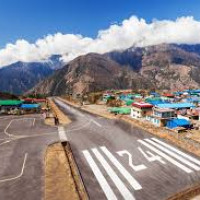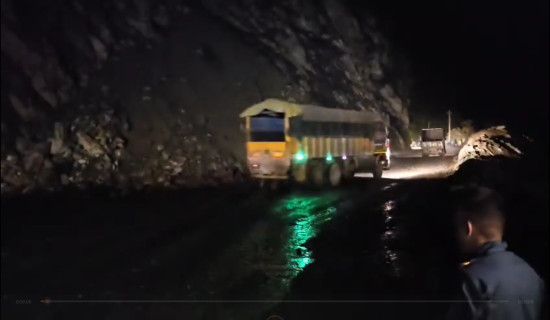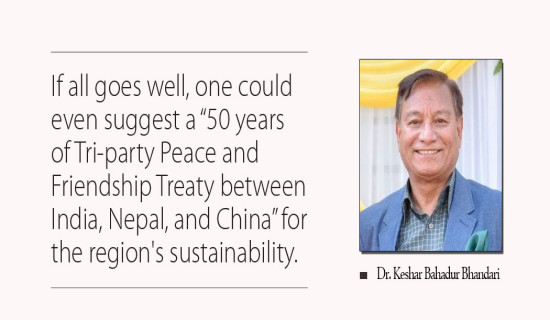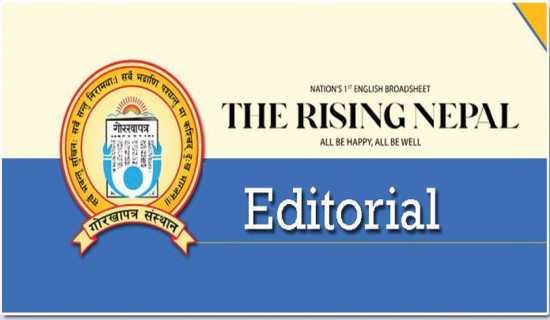- Tuesday, 30 September 2025
Climate Emergency
Most people throughout the globe have certainly heard of Sagarmatha (Mount Everest), the highest mountain in the world. Undoubtedly, Nepalis are proud of the fact that the tallest peak lies in Nepal. Each year, hundreds of tourists scale the mountain, risking their lives to triumph over it.
For mountaineers and trekkers, Sagaramatha is the Holy Grail. The majestic and towering mountain might be very strenuous to scale but eager and seasoned mountaineers don’t give a second thought for a chance to stand atop it and make history. Given its monumental significance, Sagarmatha is a national heritage of Nepal and a legend among foreigners, which is why it is utterly necessary to preserve and promote the region surrounding it. As such, Sagarmatha Sambaad was created to address climate effects on the environment, particularly in mountainous regions.
Sagarmatha Sambaad is a biennial forum initiated by the Government of Nepal with inspiration from global platforms such as the World Economic Forum in Davos. A multi-stakeholder global dialogue forum, Sagarmatha Sambaad was inaugurated on May 16, 2025, and concluded on May 18, 2025. For 2025, the theme was “Climate Change, Mountains, and the Future of Humanity.”
Climate change was the imperative subject in the forum and rightly so, since global warming and climate change are the reasons behind the melting of snow in the mountain ranges and even in the glaciers. Glaciers happen to be the lifeline for the ecology and ecosystems of the mountain environments. Not only are they an important freshwater source but they also sustain the overall biodiversity of mountain regions. And glaciers support communities by providing water for drinking, irrigation in agricultural systems, as well as hydroelectric power.
But they also happen to be highly sensitive to the consequences of climate change, as changes in precipitation due to climate change lead to reduced snowfall in glacier accumulation zones. It decreases the quantity of ice that is added to glaciers, leading to a negative mass balance in which more ice is lost than gained. The past few decades have seen an accelerated ice loss in the mountain ranges and glaciers. As a result of soot, black carbon and dust deposits from pollution, the surfaces of glaciers continue to darken, reducing their reflectivity, which causes them to absorb higher solar radiation and melt even faster.
Particularly, since the beginning of the 21st century, mountain ranges across the world are seeing an alarming rate of ice melt. In Nepal, which is home to several prominent mountain ranges, there has reportedly been a loss of a third of its ice in the past 30 years. It is thus quite right for environmental experts to be alarmed. As discussed during Sagarmatha Sambaad, there is a growing urgency to limit global warming below 1.5 degrees Celsius.
People’s lives are at risk globally because melting ice in the mountain ranges leads to a plethora of problems, such as a rise in sea levels, lack of drinking water, water shortages for agriculture and energy production, among others. Overall, Sagarmatha Sambaad concluded with an urgent and collective call for action to address the climate crisis, especially its effects on the mountainous regions.



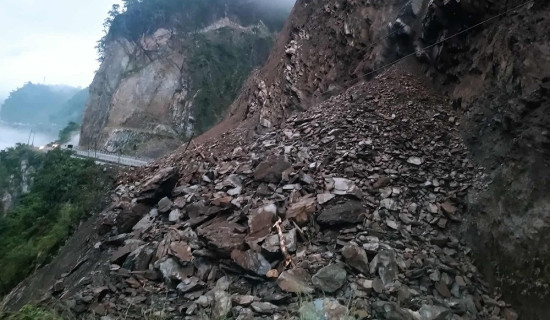
-square-thumb.jpg)



